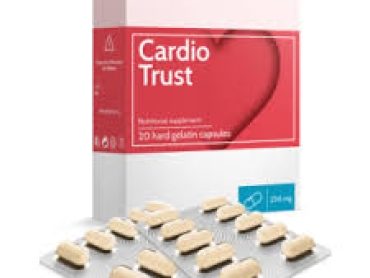Companies are advertising D-aspartic acid to fitness enthusiasts and men with low testosterone and fertility issues. But does D-aspartic acid (D-asp) have any science-based benefits or are data on its effects and side effects completely lacking? Read on to learn about the science behind D-asp as a dietary supplement.
What is D-Aspartic Acid?
Overview
Aspartic acid (Asp) is an amino acid that animals and humans naturally make in two forms: L–Asp and D–Asp. Since our bodies can make aspartic acid, it is a non-essential amino acid. L-Asp combines with other amino acids to form proteins vital to life. D-Asp exists freely as small individual molecules in various human and animal tissues .
Individual L-Asp and D-Asp molecules are made of the same atoms. In fact, they share the same chemical formula (C4H7NO4). The main difference is how they align in space: L-Asp and D-Asp molecules are mirror images of each other, like your left hand and your right hand. These “mirrored” arrangements give L-Asp and D-Asp different properties.
What we currently know about the effects of D-Asp made by our bodies comes from animal research. Free D-Asp occurs naturally in nerve and hormone tissues in both animals and humans .
D-Asp is important for brain and nerve development and nerve communication. It also helps produce and release various hormones. However, scientists are still discovering all the ways in which D-Asp affects humans .
Effects of D-aspartic acid on the Brain
High D-Asp levels promote proper brain development before and immediately after birth in mice. These levels later decrease, but D-Asp continues to spark nerve development, helping to create awareness of the surrounding environment in adult mice .
Scientists consider D-Asp a neurotransmitter: It helps to produce or enhance nerve signals, stimulate new brain connections, store memories, and promote learning in mice .
Although naturally produced aspartic acid is needed for proper brain development, some animal studies warn us about the potential dangers of supplementing.
In mice, both glutamate and aspartic acid can cause brain damage and impair learning. These so-called excitatory amino acids damaged the hypothalamus, an important brain region for hormone balance (affecting pituitary hormones) and a part of the limbic system involved in emotional control .
The above studies do not refer to the D form of aspartic acid specifically. The L and the D form of this amino acid can have different effects. The term “aspartic acid” can commonly refer to a mix of both. The form used to make proteins and taken in from food is the L version. In fact, L-aspartic acid can oppose the effects of D-aspartic acid. And in one study, L-Asp specifically had toxic effects on the kidneys and salivary glands in rats. It’s important to have these opposing effects in mind .
Hormonal Effects Of D-aspartic acid
D-Asp stimulates the production of hormones such as testosterone, progesterone, luteinizing hormone (LH), oxytocin, prolactin, growth hormone, and others involved in muscle development, sexual function, reproduction, and blood pressure in mice. These effects have not been studied in humans .
Claimed Health Benefits of D-Aspartic Acid
Possibly Ineffective for Increasing Testosterone
Many sources claim testosterone-boosting abilities for dietary supplements containing D-Asp.
Studies show that D-Asp supplements boost testosterone levels in male animals. However, scientific evidence for such effects in humans is weak, scarce, and inconsistent .
In a 12-day, controlled study, taking 3.12 grams of D-Asp daily increased testosterone levels in 23 men. All were healthy, did no resistance training, and had low initial testosterone levels .
Conversely, in a 14-day study of 24 healthy men, taking 6 grams of D-Asp daily greatly reduced testosterone. All men had at least 2 years of resistance-training and resistance-trained for 4 days in both weeks.
During a 12-week study of 19 healthy, resistance-trained men, those consuming 6-grams of D-Asp supplement daily experienced no differences in muscle size or strength gains compared to the others. None had testosterone changes. All men had at least 2 years of resistance-training and resistance-trained for 4 days per week .
In a 28-day study of healthy, resistance-trained men, 3-grams of D-Asp daily did not affect resistance-training, muscle gain, or testosterone levels .
Uses Lacking Evidence:
Below is a summary of the existing animal and cell-based research, which should guide further investigation efforts. However, the studies listed below should not be interpreted as supportive of any health benefit.
Nootropic Potential
In mice studies, free D–Asp boosted brain cell communication and memory. One human study also connected increased levels of an enzyme (DAO) that alters many D-amino acids with improved memory and thought processes. This is in contrast with studies showing that L-Asp can damage the brain and impair learning.
D-amino acids altered by DAO act similarly to D-Asp. Some scientists hypothesize that D-Asp may act as a naturally occurring nootropic, though their theories remain unproven .
D-aspartic acid Side Effects, Safety & Precautions
Clinical studies did not report side effects of dietary D-Asp supplements at 2.66 – 6.00 grams daily.
D-Asp dietary supplements are not recommended in women and children due to a lack of safety data.
D-Asp supplement labels state that use is not recommended in pregnant or nursing women, persons under the age of 18, or children. Some state that no women whatsoever should consume D-Asp dietary supplements.
Consult your physician before using D-Asp dietary supplements.
Drug Interactions
Research on D-Asp interactions with drugs and medications is lacking. However, the following should be noted:
To safeguard against unwanted drug interactions, persons considering the use of D–Asp dietary supplements should first consult their physicians regarding their health status and possible interactions between D–Asp and their medications.
According to DrugBank (a comprehensive, online scientific database), drug interaction information for D-Asp is “Not Available” .
D-Asp Natural Sources, Supplementation & Dosing
Food Sources
Can you get D-Asp from food? The simple answer is: probably not. Aspartic acid naturally occurs in foods mostly only as L–Asp. Sources of L aspartic acid include turkey, eggs, soybeans, avocado, asparagus, molasses, oysters, sausage, beef, chicken, kidney beans, peanuts, green peas, yellowtail fish, catfish .
Dietary Supplements
D–Asp dietary supplements occur as D-aspartic acid or D-aspartate (salt of D-Asp) forms commonly sold as tablets, capsules, or powders. Data are lacking to determine whether any of these forms offer advantages.
Some D-Asp supplements contained metal (calcium or zinc) chelates. These chelates are promoted as improving the body’s absorption of D-Asp. Evidence doesn’t back up such claims.
A wide variety of D-Asp dietary supplements exist. Some combine D-Asp with other potential testosterone boosters, vitamins and/or other active ingredients. Others list D-Asp as the only active ingredient.
Some supplements contain mixtures of L- and D-Asp. Others just contain the L-Asp form. Be wary of the fact that L-Asp may not have the same effects as D-Asp in the body.
Dosage Of D-aspartic acid
Follow the manufacturer’s instructions.









